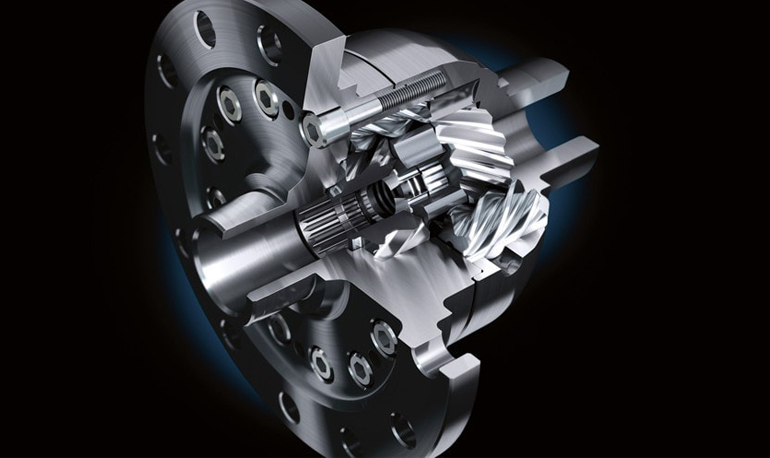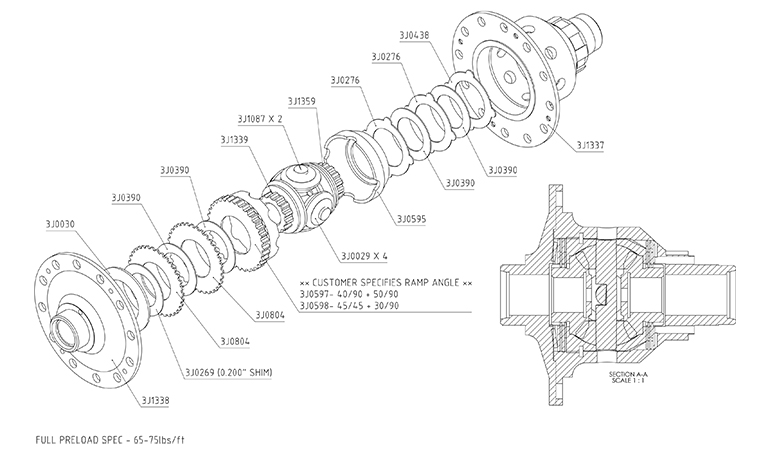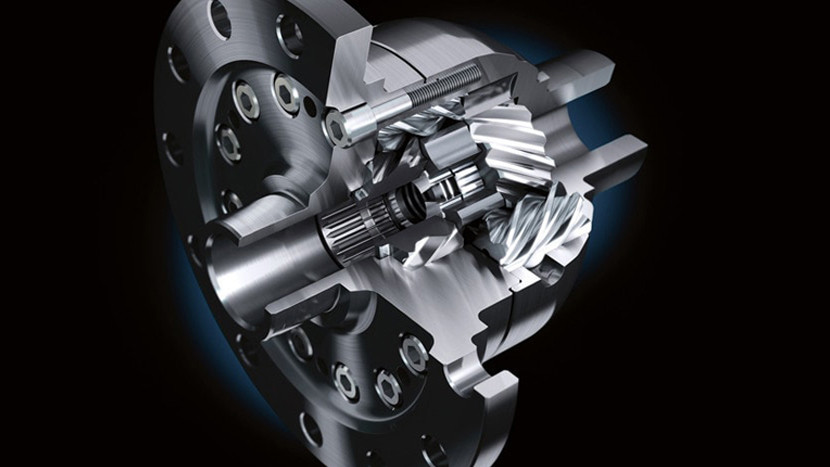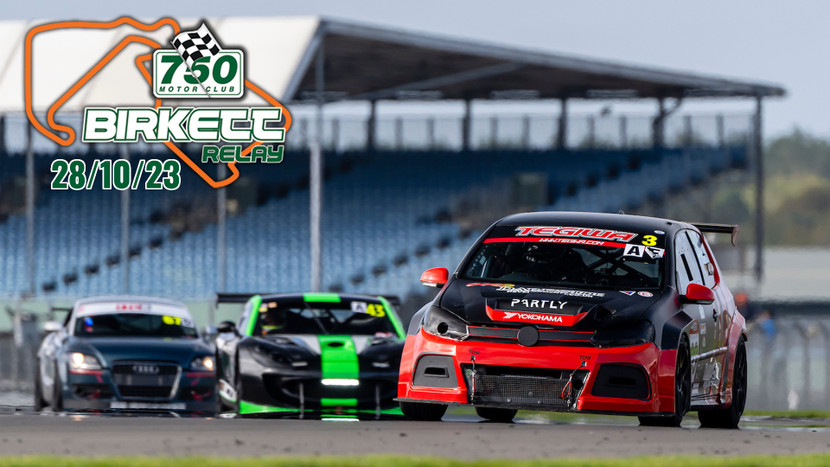Limited Slip Differentials
We all love the big chunk of low end torque from a TDI - whether it’s a standard car with a remap or a 300bhp monster build, chances are you’ve got plenty of torque to overwhelm your front tyres, especially if it’s a little cold or damp. Whatever the ultimate aim of your project, road car, track car, weekend toy or daily, it is never a bad thing to improve your ability to put torque and power to the road, and one of the best ways of doing this is to fit a Limited Slip Differential (LSD).
The differential is an important part of the vehicle transmission. It allows the outside and inside driven wheels to travel at different speeds, making cornering smoother. This is particularly noticeable when you have a lot of steering lock applied, such as in town driving or maneuvering in a car park. Because the outside wheel has further to go when turning a corner, it has to turn faster. The differential allows it to do just that.
Standard TDIs (and most cars) come from the factory fitted with an open differential. This allows the inside and outside wheels to turn at any combination of different speeds. While this fulfils the requirement of making cornering and parking nice and smooth, it is hurting the car’s ability to put maximum power to the road. With an open differential, the torque from the engine will take the path of least resistance - this means that whichever wheel has the least grip will spin, while the other wheel receives almost no driving force at all. Anyone who has driven a front wheel drive car has probably experienced this - as you try and power out of a corner, the inside wheel spins and you don’t really go anywhere!
A Limited Slip Differential addresses this issue with some clever technology which limits the difference in speed there can be between the wheels. An LSD is designed to eliminate the situation where one wheel spins while the other receives no torque, making sure all the available grip is used and maximum acceleration is achieved.
If you like to drive around with 1 tyre fire, the inside wheel spinning, you might want to consider a change of driving style as your directional ability will be compromised when both wheels are spinning and you will certainly be going much faster when you realise!
There are two main designs which are available on the market today - Gear Type LSDs and Metal Plate LSDs.
Gear Type
Gear Type LSDs go by many names - Torsen ®, Torque Sensing, Helical, or ATB ® , but all are variations on a similar concept. These type of differentials use a gear system to automatically send torque to the wheel with the most grip, rather than an open diff which would send it to the wheel with the least grip. This translates into lots more traction and driving force. When cornering, it also means that torque is transferred to the outside wheel, which always has more grip. This has the effect of helping the front end to tuck into the corner, reducing the feeling of understeer where the front end of the car tries to wash out wide.
Gear Type differentials are one of the very few modifications you can do to your car which has absolutely no downside. Quaife ATB differentials are available for most TDIs as well as many other cars, carry a lifetime warranty, and require no maintenance or special gear oil. They are a true ‘fit and forget’ solution, and are just as smooth as a standard open differential when maneuvering around a car park or in town. Its for this reason we recommend these as one of the best modifications you can do to your car, and our many customers with these units fitted will agree. It is also the reason why the vast majority of cars fitted with LSDs from the factory use this design.
While Gear Type differentials are hugely beneficial on track, it is with extreme track use you will find the limits of these units. In extremely hard cornering with track tyres, using kerbs and rumble strips on a racetrack, it is possible to lift the inside wheel almost completely off the ground. Gear Type differentials have a limit to how much they can bias the torque, and in this situation the limit can be exceeded. This leaves you spinning up the inside wheel again just as you would with an open differential. This is why for track and competition vehicles, as well as some hardcore weekend warriors, a Metal Plate LSD can be a more desirable option.

Maintenance:
Parts: Non-applicable for Quaife.
Oil: We recommend sticking with Genuine VW 75w90 Synthetic Oil. Limited-slip Friction Modifier must NOT be used, as Torsen style LSD's rely on friction in order to function.
Shop our Quaife LSD’s here - https://www.darksidedevelopments.co.uk/brands/Qua...
|
Gear Type Advantages |
Gear Type Disadvantages |
|
|
Credit - Quaife Engineering
Plate Type
Darkside Developments in partnership with 3J Driveline have developed a Metal Plate LSD for the 02M, 02Q and 02J Gearboxes.These fully adjustable units are the smoothest acting Metal Plate designs on the market, for the most progressive action and best performance in all conditions.

These units work in a completely different way to a gear type differential - instead of a set of gears biasing torque to each wheel, a metal plate type differential has clutch packs inside. When you accelerate, these clutch packs are squeezed together, which locks the differential. Because this clutch is locking the wheels together, even if a wheel lifts off the ground the differential will stay locked and the vehicle will keep accelerating out of the corner.
Unlike a Gear Type LSD, these units do not actively bias torque - they simply lock up to varying degrees to force both wheels to turn rather than one spinning on its own. Metal Plate LSDs feel very different to drive to a Gear Type LSD. Depending on setup, the locking action is more aggressive and pulls the nose of the vehicle hard into corner and allows for massive traction on corner exit.
These units do also come with some compromises. They can be quite noisy, especially at full lock maneuvering at low speed. Unlike a gear type diff, the clutch plates inside the unit do wear out and require replacement periodically, which could be every few thousand miles. It is often recommended to use ‘Friction Modified’ LSD Oil and replace regularly, as the wearing of the plates produces metal particles which can build up in the gear oil. While it is possible to run a Metal Plate differential on a road car, they are not maintenance free, and most cars that do significant road miles are recommended to fit an ATB Gear Type Differential.

Lock Capacity
A clutch type differential has a stack of thin clutch-discs, half of which are coupled to the axles, the other half of which are coupled to the LSD housing. The number of discs used by the LSD directly affects the durability of the LSD, and how much you can adjust it (i.e The greater the number of discs, the more adjustability on offer)
These clutch-discs can be re-stacked; in effect, activating/deactivating the outer clutch-discs (the discs coupled to the LSD housing), thus increasing/decreasing the lock capacity.
A very common misconception is that changing the number of clutch-discs will change the % of lock. For example, there is no such thing as “70% lock”; All LSD's will lock 100%. What the % really means is the torque threshold of that particular LSD, so if the clutch-discs were re-stacked to 70% of the lock capacity of the LSD, if you were to go over that threshold, the clutch-discs will start slipping.
Pre-Load
Also known as Initial Torque, or Breakaway Torque. This is essentially the amount of torque required by the LSD “before” it will start slipping i.e The higher the initial torque, the longer the LSD will be “locked” during low speed manoeuvring. This is generally why it is preferable to have a lower initial torque, especially if a plate type LSD is to be used on a street car.
Cone type: The most common method for setting Pre-Load is via the use of conical washers, typically one on either side of the LSD housing.
Aggressiveness
One method for creating the clamping force on the clutch-discs is the use of a cam/ramp assembly such as used in a plate type LSD. The spider gears mount on the crosspin which rests in angled cutouts forming cammed ramps. The cammed ramps are not necessarily symmetrical. If the ramps are symmetrical, the LSD is 2 way. If they are triangular (i.e. one side of the ramp is vertical), the LSD is 1 way. If both sides are sloped, but are asymmetric, the LSD is 1.5 way. By changing the ramp angles on the cam, the driver can adjust the aggressiveness of the LSD.
2-Way, 1.5-Way and 1-Way
Broadly speaking, there are three input torque states: load, no load, and over run. During load conditions, the coupling is proportional to the input torque. With no load, the coupling is reduced to the static coupling. The behaviour on over run (particularly sudden throttle release) determines whether the LSD is 1 way, 1.5 way, or 2 way.
A 2-way differential will have the same limiting torque in both the forward and reverse directions. This means the differential will provide some level of limiting under engine braking.
A 1.5-way differential refers to one where the forward and reverse limiting torque are different but neither is zero as in the case of the 1-way LSD. This type of differential is common in racing cars where a strong limiting torque can aid stability under engine braking.
A 1-way differential will provide its limiting action in only one direction. When torque is applied in the opposite direction it behaves like an open differential. This is the preferred setup for a FWD vehicle.
Maintenance:
Parts: As a wearable part, clutch-discs will need to be replaced when worn. This can be determined by testing the Initial Torque of the LSD. Typically, if the value is under 50lbft's on a Pre-Loaded LSD, this would signal worn clutch-discs.
Oil: We recommend sticking with Genuine VW 75w90 Synthetic Oil. There is no need for “Special LSD Oil” as this is all just marketing, typically by the LSD manufacturer trying to sell their own-brand Oil. If you find the “chatter” too much, you can always add additional Friction Modifier to “fine-tune” the LSD to your requirements, You will need to bare in mind the higher the amount of friction modifier, the lower the torque threshold of the LSD.
Shop our Plated LSD’s here - https://www.darksidedevelopments.co.uk/brands/Dar...
|
Plate Type Advantages |
Plate Type Disadvantages |
|
|
This video is show as an example. This may not be 100% accurate as each manufacturers design may vary.
Credit - Learn Engineering
Whether you are a racer trying to get to the top step of the podium or wanting the most out of your daily, one of our LSD options will put a big smile on your face. It really is one of the best mods you can do!
Recent Posts
-
Silverstone GP - ClubEnduro - 750MC - 29th October 2023
An unusual calendar for 2023 meant that round 7, the final round of the season for the 750MC Club En …23 11 2023 -
750MC Birkett Relay - Silverstone GP - 28th October 2023
With a hectic season of racing almost to a close, we were back at Silverstone for the 750 Motor Club …15 11 2023 -
Snetterton 300 - BRSCC TTCR - 13th-15th October 2023
For Round 6 of the BRSCC Audi TT Cup Racing, we were at Croft, which turned out to be VERY eventful …20 10 2023




